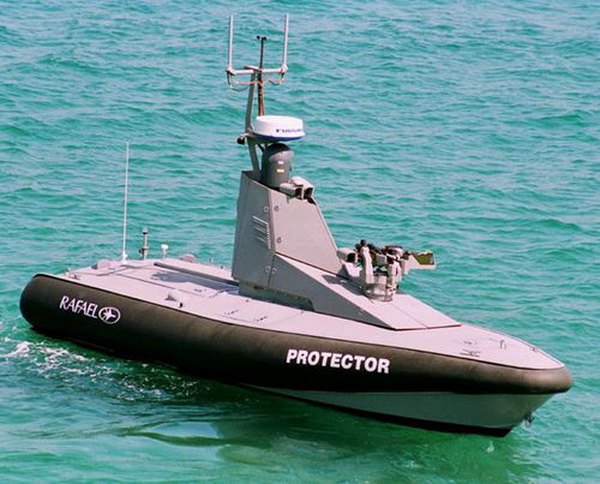Beginning in 2016-2017, the Single Class Surface Combatant Project is intended to produce replacements for the Royal Canadian Navy’s twelve Halifax-class frigates and three Iroquois-class destroyers. This project will be the most significant component of the National Shipbuilding Procurement Strategy. But the announcement that Canada supports military intervention in Syria, though it will not directly participate, presents an important question: does Canada lack sufficient sealift capabilities?
[captionpix align=”left” theme=”elegant” width=”300″ imgsrc=”http://natoassociation.ca/wp-content/uploads/2013/09/ship.jpg “]
Sealift, which refers to the transport of troops and supplies by ship, can be integral to a successful intervention. It can compliment or serve as an alternative to strategic airlift, which is the transport of troops and supplies to conflict zones via aircraft like the C-17 Globemaster III. In the case of Syria, Canadian troops could be deployed to the country through sealift in the absence of secure airfields. Closer to home, amphibious assault ships could fill a valuable humanitarian role, supporting relief efforts in Haiti or elsewhere. While expensive, sealift expands the options available to military planners.
Yet the only sealift the Royal Canadian Navy is anticipated to possess in the coming years comes from two Berlin-class auxiliary ships purchased under the Joint Support Ship Project, another pillar of the National Shipbuilding Procurement Strategy. These vessels, while important to Canada’s naval forces in a number of other areas, can only transport 150 troops each on short-term deployments. Though an intervention on the ground in Syria has not been proposed, Canadian participation in such an intervention elsewhere in the world would be almost entirely dependent on strategic airlift and the efforts of other countries to secure adequate airfields. To reduce this dependency, it may be worthwhile considering the reactivation of a project apparently abandoned by Canadian defence planners in 2008 due to budget constraints: the Amphibious Assault Ship Project.
This procurement project envisioned the purchase of two vessels capable of providing strategic sealift and participating to some degree in amphibious operations. In order to deploy the troops onboard across a potentially large swath of territory, some defence planners also called for the amphibious assault ships to come complete with a flight deck to accommodate transport helicopters, as well as a hangar that could carry several more maritime transport helicopters on extended voyages. It has been reported that the Royal Canadian Navy was interested in acquiring two Mistral-class amphibious assault ships from France. These vessels would meet all the conditions previously outlined, though the price tag may have been what discouraged defence planners from proceeding with the procurement: each Mistral-class vessel costs between $450 million and $600 million.
A cheaper alternative has been proposed by the Royal Canadian Military Institute. The Bay-class landing ship is estimated to cost $250 million per vessel and is in service with the naval forces of both the United Kingdom and Australia. Each can carry 350 troops but can also be adapted to accommodate as many as 700 troops on short deployments. Unfortunately, however, the Bay-class has no capacity for a hangar onboard, though transport helicopters could still land and take off from a modest flight deck.
There are many other alternatives to the Mistral on the market. Yet, like the Bay-class, many of these do not meet all the requirements set out when the project was first considered. The Rotterdam-class amphibious warfare ship, currently in service with the Royal Netherlands Navy, would not be able to accommodate a sufficient number of the Cyclone maritime helicopters purchased by Canada. Spain’s Galicia-class vessel has similar shortcomings. While South Korea’s Dokdo-class would meet Canada’s requirements on paper, only one vessel has been completed to date. Given the recent Canadian experiences with developmental procurements – such as the aforementioned Cyclone helicopter or the problematic F-35 multirole fighter – there is an understandable reluctance to purchase vessels which are at a heightened risk of being delivered well behind schedule and well over budget.
If the Royal Canadian Navy is to acquire strategic sealift capability in the coming years, the solution may be modelled on Britain’s HMS Ocean. This assault ship can accommodate over 800 troops and up to 18 helicopters, well-exceeding Canada’s requirements. Though it is the only vessel of its class, the HMS Ocean has been in operation since 1995 and has not experienced any significant technical issues in its years of service thus far. Having been proven time after time, Canadian policymakers would likely see the HMS Ocean as a far less risky option than the Dokdo-class. To boot, additional vessels of this class would cost little more than $400 million, a somewhat lower cost than the previously considered Mistral-class. Regrettably, these cost savings translate into a shorter operational life: the HMS Ocean is expected to only provide 20 years of service before requiring replacement.
While the possibility of intervention in Syria should incline Canadian policymakers to revisit the subject of amphibious assault ships, it is unlikely that a serious discussion will take place soon. Indeed, the abandonment of the Amphibious Assault Ship Project reflects a broader shift in the Canadian Forces from expeditionary to defensive capabilities. Arctic sovereignty tops the agenda and the current government’s focus in naval matters seems to predominantly be on two other aspects of the National Shipbuilding Procurement Strategy: the Polar Class Icebreaker Project and the Arctic Patrol Ship Project. Unfortunately, this may limit Canada’s ability to contribute to future NATO operations in a major role.




